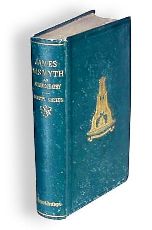 This online book is the complete autobiography of James Nasmyth (1808-1890) including illustrations.
This online book is the complete autobiography of James Nasmyth (1808-1890) including illustrations.
Nasmyth was the inventor of the steam hammer, shaper and lathe reversing mechanism among others.
His most important invention was his contribution of the
self acting principle of machine design.
He was a contemporary of Muadslay (the inventor of the screw turning lathe) and Bessemer (the inventor of the bulk steel conversion process). Written in an easy down to earth style, Nasmyth brings to life the world of early 1800's England.
His discriptions of the technology of the times and improvements made during this part of the industrial revolution should be required reading for engineering and history students alike.
Nasmyth starts his narrative with some family history including a humorus story about the origin of his name.
He continues with his unusual (by modern standards) early education, his youthful endevors into mechanics and admiration of James Watt (the steam engineer).
He discribes how he became Maudslay's assistant and eventualy starting his own machine manufacturing business.
Among the many drawings reproduced is a copy from his design notebook of
The original sketch of the steam hammer.
Nasmyth also writes about his other interests including the origin of written language, astronomy and building telescopes. The last chapter includes a chronological list of Nasmyth's inventions with discriptions.
|
 James Nasmyth: Autobiography
James Nasmyth: Autobiography
 James Nasmyth: Autobiography
James Nasmyth: Autobiography